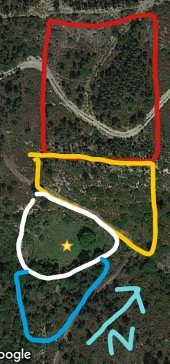





He who asks a question is a fool for five minutes, he who does not ask a question is a fool for a lifetime. CHINESE PROVERB.
 1
1




Iterations are fine, we don't have to be perfect
My 2nd Location:Florida HardinessZone:10 AHS:10 GDD:8500 Rainfall:2in/mth winter, 8in/mth summer, Soil:Sand pH8 Flat




He who asks a question is a fool for five minutes, he who does not ask a question is a fool for a lifetime. CHINESE PROVERB.


 2
2




Iterations are fine, we don't have to be perfect
My 2nd Location:Florida HardinessZone:10 AHS:10 GDD:8500 Rainfall:2in/mth winter, 8in/mth summer, Soil:Sand pH8 Flat
 3
3




Moderator, Treatment Free Beekeepers group on Facebook.
https://www.facebook.com/groups/treatmentfreebeekeepers/





 2
2




A human being should be able to change a diaper, plan an invasion, butcher a hog, conn a ship, design a building, write a sonnet, balance accounts, build a wall, set a bone, comfort the dying, take orders, give orders, cooperate, act alone, solve equations, analyze a new problem, pitch manure, program a computer, cook a tasty meal, fight efficiently, die gallantly. Specialization is for insects.
-Robert A. Heinlein
 1
1




He who asks a question is a fool for five minutes, he who does not ask a question is a fool for a lifetime. CHINESE PROVERB.




He who asks a question is a fool for five minutes, he who does not ask a question is a fool for a lifetime. CHINESE PROVERB.
 1
1




Moderator, Treatment Free Beekeepers group on Facebook.
https://www.facebook.com/groups/treatmentfreebeekeepers/





 2
2




He who asks a question is a fool for five minutes, he who does not ask a question is a fool for a lifetime. CHINESE PROVERB.




He who asks a question is a fool for five minutes, he who does not ask a question is a fool for a lifetime. CHINESE PROVERB.
 1
1




Moderator, Treatment Free Beekeepers group on Facebook.
https://www.facebook.com/groups/treatmentfreebeekeepers/





 4
4






Moderator, Treatment Free Beekeepers group on Facebook.
https://www.facebook.com/groups/treatmentfreebeekeepers/





 2
2




Moderator, Treatment Free Beekeepers group on Facebook.
https://www.facebook.com/groups/treatmentfreebeekeepers/









A human being should be able to change a diaper, plan an invasion, butcher a hog, conn a ship, design a building, write a sonnet, balance accounts, build a wall, set a bone, comfort the dying, take orders, give orders, cooperate, act alone, solve equations, analyze a new problem, pitch manure, program a computer, cook a tasty meal, fight efficiently, die gallantly. Specialization is for insects.
-Robert A. Heinlein
 2
2




Moderator, Treatment Free Beekeepers group on Facebook.
https://www.facebook.com/groups/treatmentfreebeekeepers/









He who asks a question is a fool for five minutes, he who does not ask a question is a fool for a lifetime. CHINESE PROVERB.




 1
1

















Hans Albert Quistorff, LMT projects on permies Hans Massage Qberry Farm magnet therapy gmail hquistorff




Gardens in my mind never need water
Castles in the air never have a wet basement
Well made buildings are fractal -- equally intelligent design at every level of detail.
Bright sparks remind others that they too can dance
What I am looking for is looking for me too!

 1
1








A human being should be able to change a diaper, plan an invasion, butcher a hog, conn a ship, design a building, write a sonnet, balance accounts, build a wall, set a bone, comfort the dying, take orders, give orders, cooperate, act alone, solve equations, analyze a new problem, pitch manure, program a computer, cook a tasty meal, fight efficiently, die gallantly. Specialization is for insects.
-Robert A. Heinlein







 1
1




Pearl Sutton wrote:Hans Quistorff: I have considered doing that with the terracing I need to do. The soil around here is rocky, the saying is "the soil here produces two abundant crops of rocks a year!" I figure if I just dirt bank them, and toss all the rocks that I see onto the wall, it might be enough, with lots of deep rooted plants. Are you having any erosion issues? How long has it been in place?
Hans Albert Quistorff, LMT projects on permies Hans Massage Qberry Farm magnet therapy gmail hquistorff










|
If you two don't stop this rough-housing somebody is going to end up crying. Sit down and read this tiny ad:
Homestead Pigs Course
https://permies.com/wiki/365748/Homestead-Pigs
|





